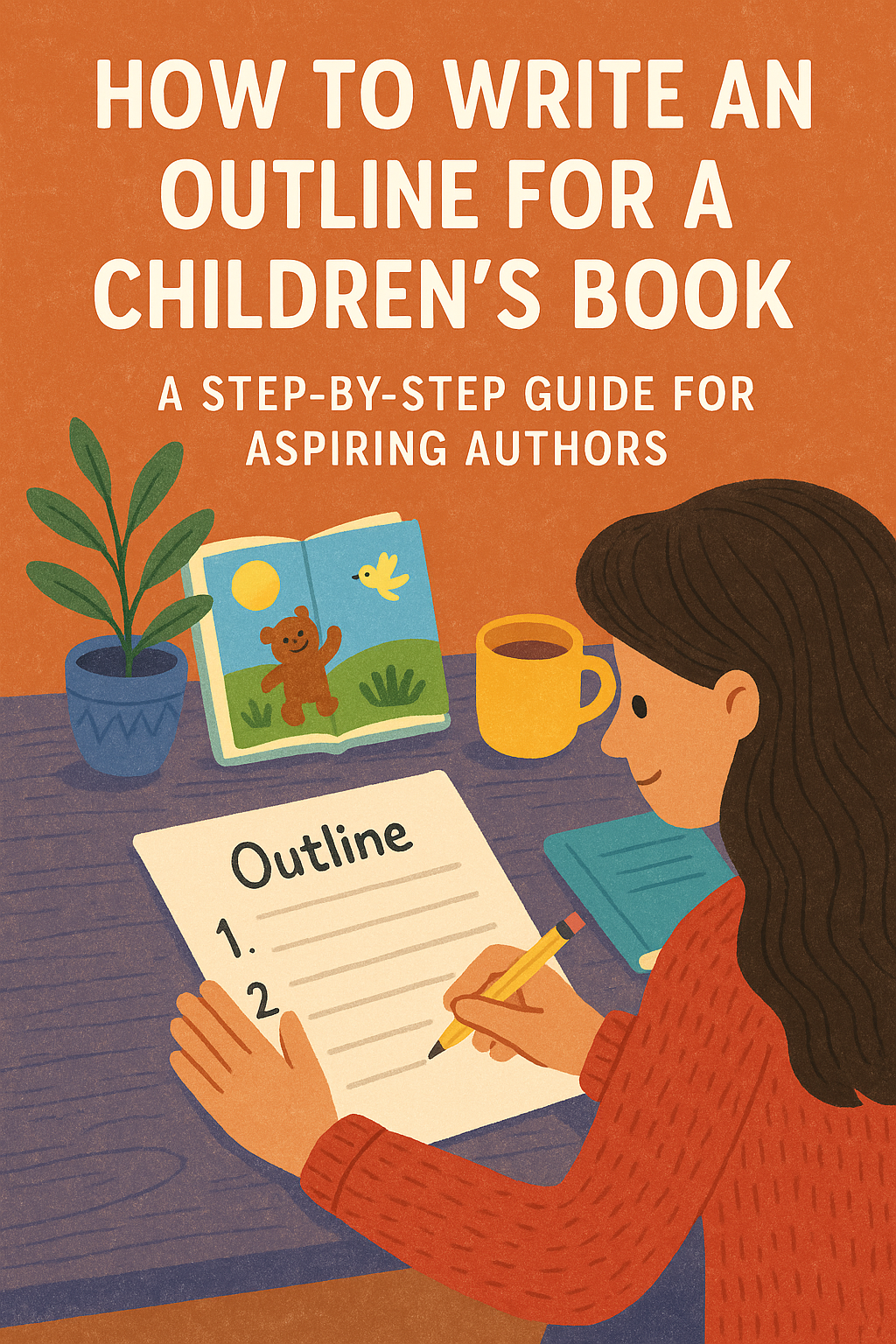Writing for children is often perceived as simple, even whimsical. After all, how complicated can it be to write a 500-word story for five-year-olds? But in reality, children’s book writing is one of the most intricate and impactful forms of storytelling. You’re not just entertaining; and you’re shaping minds, building empathy, and introducing complex ideas in simple, engaging ways.
This is why a solid outline is essential. Whether you’re a seasoned author or working with professional ghostwriters, having a clear structure ensures your story flows smoothly, maintains age-appropriate pacing, and hits all the right emotional notes. Outlining provides the roadmap that guides your creativity and keeps your messaging intentional.
In this comprehensive guide, we’ll show you exactly how to write an outline for a children’s book that delights, informs, and resonates—no matter the age group.
Step 1: Understand Your Target Age Group
Children’s books aren’t one-size-fits-all. Writing for a preschooler is vastly different from writing for a middle-grade reader. Your outline must reflect the developmental stage of your audience.
Here’s a quick breakdown:
- Board books (Ages 0–3): Simple images, sensory language, basic concepts.
- Picture books (Ages 3–7): Strong narrative arc, relatable themes, often under 1,000 words.
- Early readers (Ages 5–8): Short chapters, basic vocabulary, clear dialogue.
- Chapter books (Ages 6–9): Developing subplots and character growth, which are still straightforward.
- Middle grade (Ages 8–12): Complex themes, longer word counts (20k–50k), multi-chapter arcs.
Understanding your age group helps shape the tone, plot depth, vocabulary, and emotional arc of your outline.
Step 2: Define Your Core Message or Theme
Children’s books often teach a lesson or center around a universal theme—friendship, courage, empathy, resilience. Whether it’s subtle or overt, your story should be anchored by a core message.
Ask yourself:
- What do I want the child to feel, think, or do after reading this?
- What problem does the main character face, and what do they learn?
For example, in a story about a shy child making their first friend, your theme might be about overcoming fear and embracing connection. Keep this message in mind as you build your outline—it will be your compass.
Step 3: Build a Basic Story Structure
All good stories—whether for adults or children—follow some variation of the three-act structure:
Act I – Beginning:
- Introduce the main character and setting
- Establish the conflict or challenge
- Show what the character wants or needs
Act II – Middle:
- The character attempts to solve the problem
- Obstacles and setbacks arise
- Emotional growth begins
Act III – End:
- Climax: The turning point or solution
- Resolution: The character changes or learns
- Happy (or meaningful) ending
For children’s books, especially picture books, this structure should be compressed but not eliminated. Outlining each act, even briefly, helps you visualize the journey.
Step 4: Create a Page-by-Page Outline (for Picture Books)
Picture books are often told over 24–32 pages, with most of the story occurring across 12–14 double-page spreads. This makes page planning critical.
Here’s how you might structure a 12-spread (24-page) picture book:
- Spread 1–2: Introduce character and setting
- Spread 3–4: Present the conflict or goal
- Spread 5–8: Escalate the problem with obstacles
- Spread 9–10: Climax—peak tension or realization
- Spread 11–12: Resolution and emotional payoff
Use your outline to detail what happens on each spread. This is especially helpful if you’re collaborating with professional ghostwriters or illustrators, as it keeps the narrative and visual pacing aligned.
Step 5: Develop Your Characters
Strong characters drive memorable children’s books. Even in a 300-word story, your main character should have:
- A goal or desire
- A flaw or fear
- A unique personality
- A growth arc
In your outline, note:
- Who your protagonist is (name, traits, quirks)
- What motivates them
- How they change by the end
Supporting characters should also serve the plot—whether they help or hinder the protagonist’s journey.
Step 6: Identify Key Scenes and Plot Points
With your character and structure in place, now sketch out the major scenes in your story. These are the narrative anchors that keep your pacing tight and your message focused.
Some example plot points:
- The moment the character fails or gives up
- A twist or surprise
- The discovery that changes everything
- A moment of internal reflection or growth
Even short children’s books benefit from a few well-placed turns that add depth and emotion to the story.
Step 7: Add Rhythm and Repetition (Optional but Powerful)
Especially in books for younger readers, repetition and rhythm help with retention, engagement, and language development.
Examples include:
- Repeating phrases (“But the little bear wasn’t ready just yet…”)
- Cumulative structures (“She packed a spoon, a fork, and a shiny red apple…”)
- Rhyming patterns
If you plan to use these devices, mark them in your outline. They influence sentence length, page layout, and overall voice.
Step 8: Include Visual Cues (If You Plan to Illustrate)
Many children’s books are illustrated, which means your outline should account for visual storytelling, too.
This includes:
- Describing scene changes clearly
- Pacing emotional highs and lows across page turns
- Indicating moments that lend themselves to strong imagery
A great tip: let the illustrations do some of the narrative work. If a character is scared, you don’t always need to say it—show it through the art. When working with a professional ghostwriter or illustrator, these notes can make collaboration smoother and more effective.
Step 9: Keep Language Age-Appropriate
Your outline doesn’t have to include exact phrasing, but it should reflect the tone, vocabulary, and sentence length appropriate for your target readers.
- Use simple sentences for ages 3–5
- Introduce dialogue sparingly for ages 5–8
- Add a more complex narrative and description for middle-grade
An outline that acknowledges these linguistic layers will translate more effectively when it’s time to write the manuscript.
Step 10: Review and Refine
Outlining is iterative. Your first draft is just a blueprint. Revisit it to:
- Check pacing and emotional progression
- Ensure scenes flow logically
- Trim unnecessary plot points or characters
- Align more closely with your theme
If you’re unsure whether your outline hits the mark, consider having it reviewed by an editor—or collaborate with professional ghostwriters who specialize in children’s book writing. Their insights can refine your ideas into something truly market-ready.
Final Thoughts: Outlining Is Your Story’s Superpower
Creating an outline for a children’s book isn’t about restricting creativity—it’s about giving it structure. Like a solid foundation for a house, a great outline makes everything else—characters, illustrations, emotion, pacing—work better.
Whether you’re self-publishing or submitting to a traditional publisher, a strong outline is your first step to crafting a children’s book that connects with hearts and minds.
At BookPlanets, we support aspiring and seasoned authors alike with customized guidance and access to professional ghostwriters skilled in children’s book writing. If you’ve got a concept and need help building it into a fully realized story, we’re here to help.

